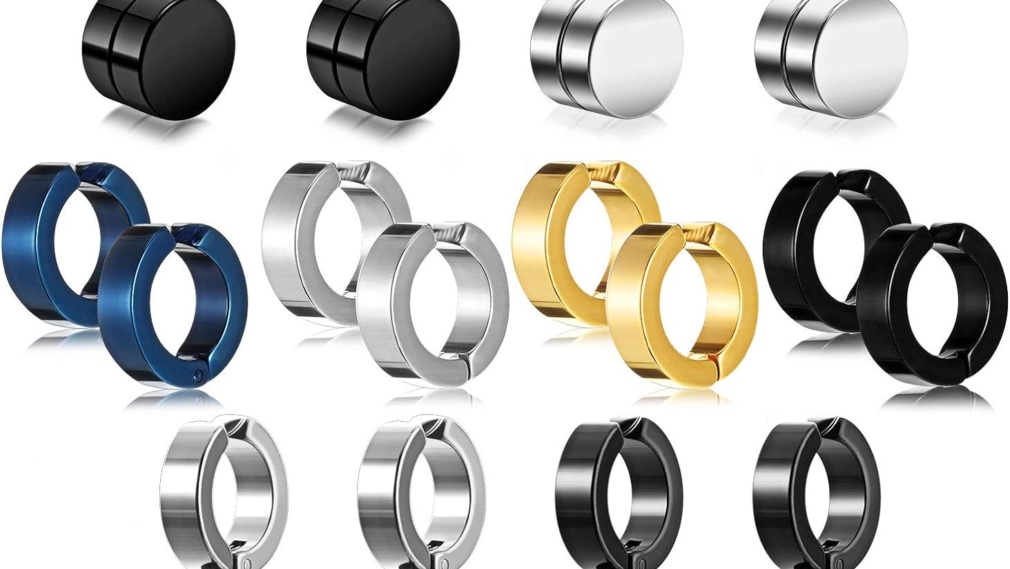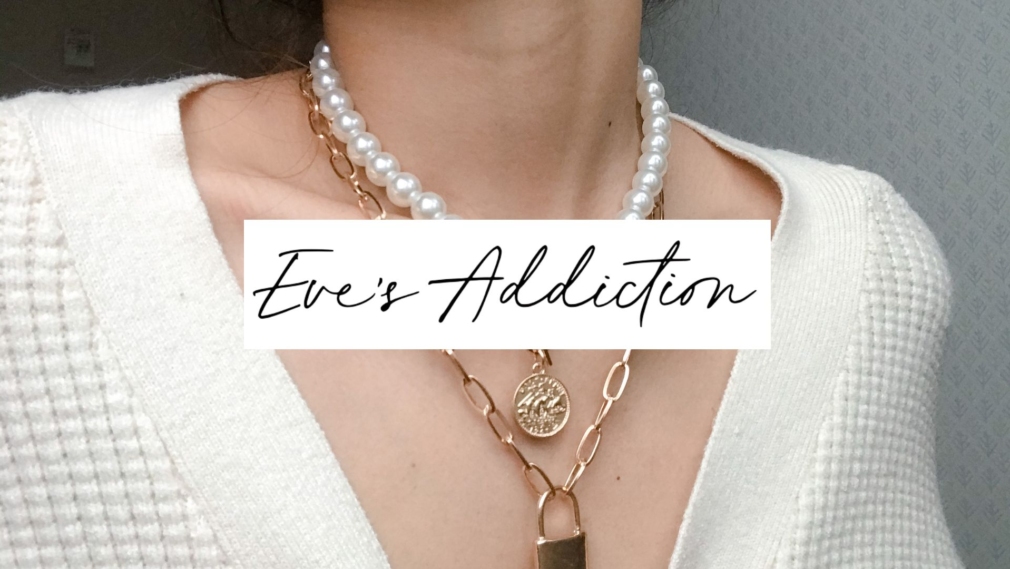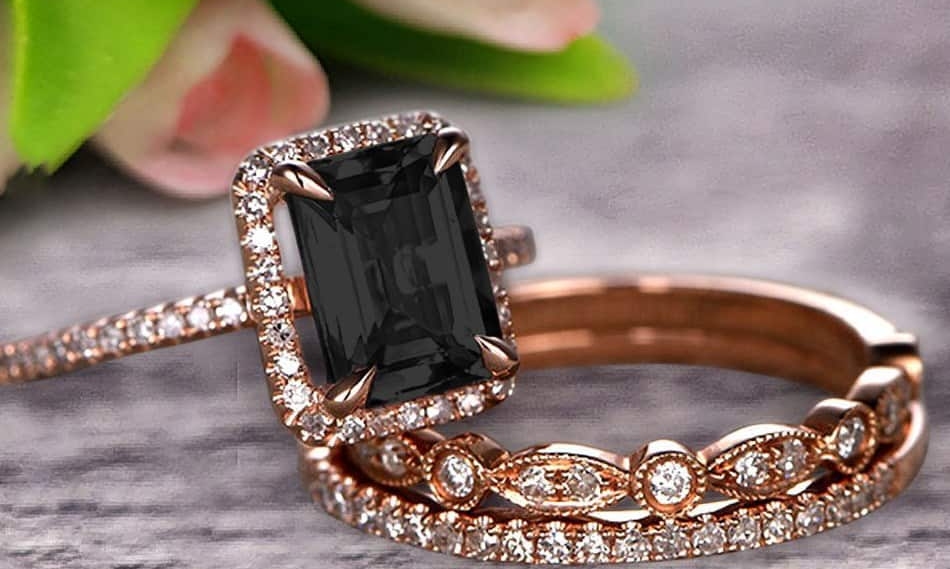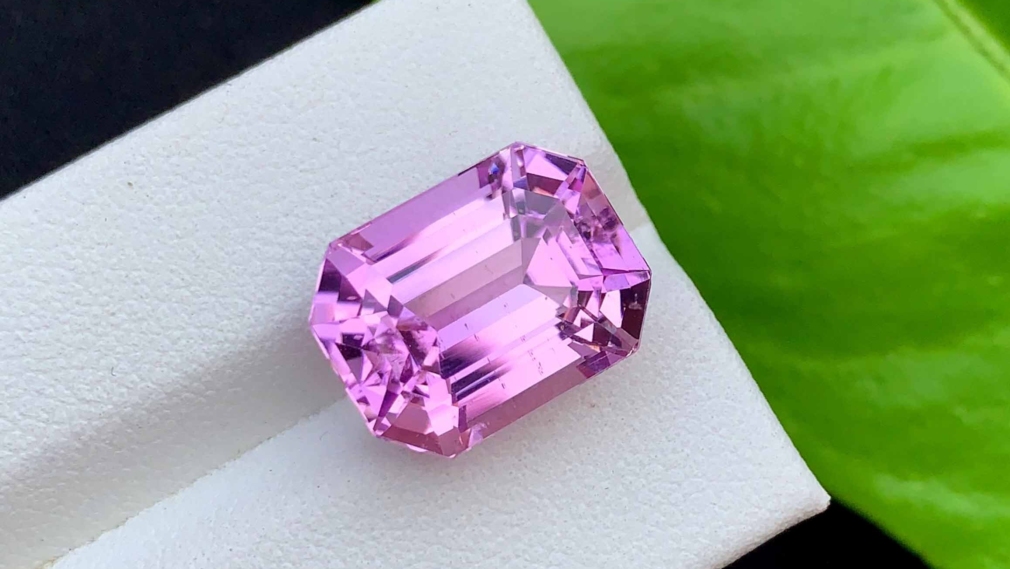555Views 0Comments
Morganite vs Moissanite Rings: The Ultimate Comparison
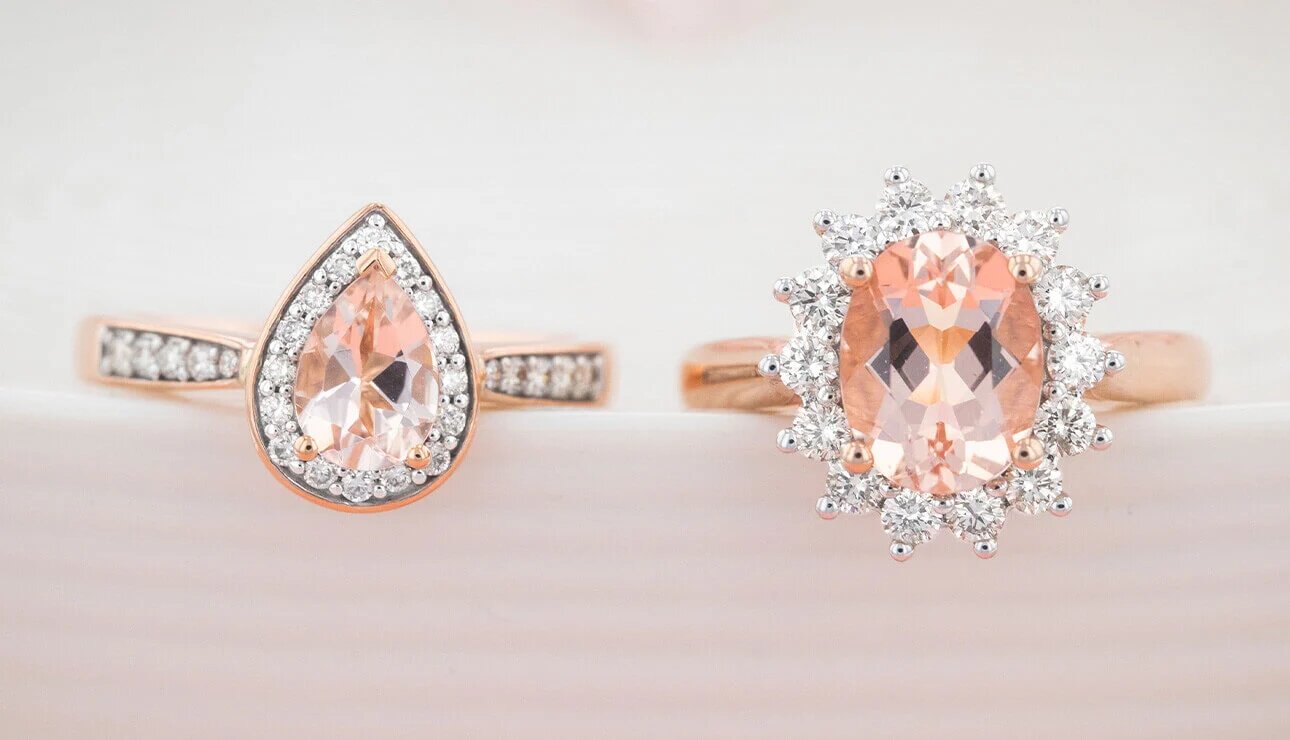
Do you want to pick the perfect shiny and beautiful ring? Well, two popular choices shine wonderfully.
Let’s learn about the differences between them to help you decide which one is the best.
Think of morganite as a lovely pink gemstone that many people like.
Morganite’s soft and gentle pink color makes it feel romantic, especially for occasions like engagements.
Now, moissanite is known for being super sparky. It’s a gemstone created in a lab that looks like a diamond but shines even more brightly.
Moissanite is tough enough to handle daily wear, so many people choose it instead of regular diamonds. Both morganite and moissanite are unique in their ways.
What you are going to choose might depend on things like your personal style, how much you want to spend, and how often you plan to wear the ring.
So, let us explore the detailed comparison of Moissanite vs Morganite rings to determine which one is right for you!
Moissanite vs Morganite: A Detailed Comparison
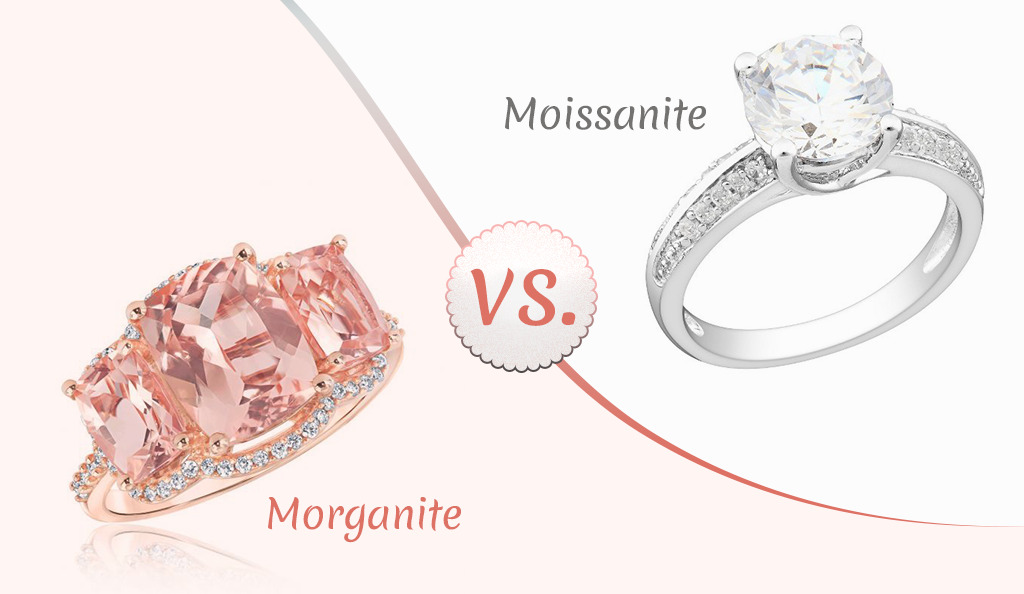
If we talk about the Moissanite vs Morganite comparison, both are different.
Morganite is a beautiful gemstone related to emerald and aquamarine. It comes in shades of gentle pink, like a romantic and stylish color.
People link this soft color with love and gentleness. Morganite’s fine pastel shades make it a sought-after choice for morganite engagement rings and jewelry.
It gives the best hardness level, ranking around 7.5 to 8 on the Mohs scale, ensuring durability for everyday wear.
Moissanite is a man-made jewel that shines brightly and has many colorful flashes.
It’s made in labs to look like diamonds and is created from silicon carbide.
Moissanite shines a lot because it bends light a whole bunch, making it even shinier than other precious stones.
This gemstone offers a variety of shades, from near-colorless to little-color shades.
With a hardness of 9.25 on the Mohs scale, moissanite is incredibly durable, making it suitable for daily wear in jewelry like moissanite rings or necklaces.
Moissanite vs Morganite: The Detailed Cost Review
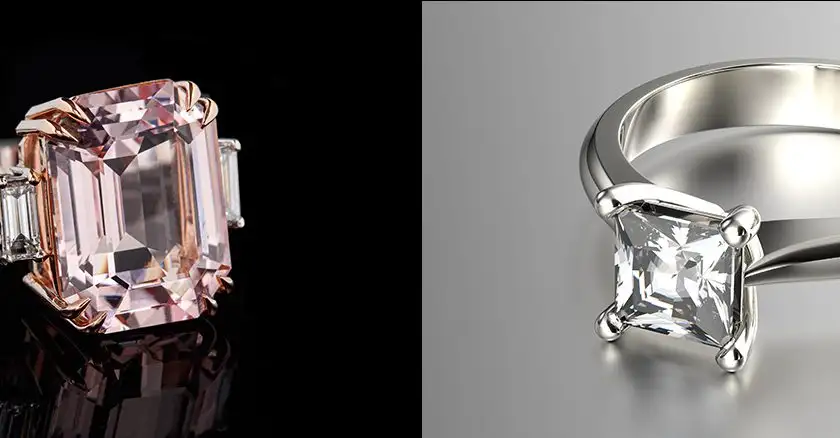
When looking at the cost factor for Moissanite and the Morganite, moissanite is usually cheaper than morganite.
Morganite’s price can change based on things like how big it is, how intense its color is, and how clear it is.
Even though morganite is considered one of the more affordable gemstones, it’s often more expensive than moissanite.
This is because morganite is rare, and getting it from mines costs a lot. For a better look or fashion, you can wear Morganite pendants and rings.
On the other hand, moissanite is a good option if you want something that doesn’t cost as much as diamonds or other colorful gemstones.
Moissanite is made in a lab, which helps keep its price down.
But remember, what you personally like, such as the color and how shiny it is, matters a lot when choosing between these two gems.
Moissanite vs Morganite: A Look at the Origin
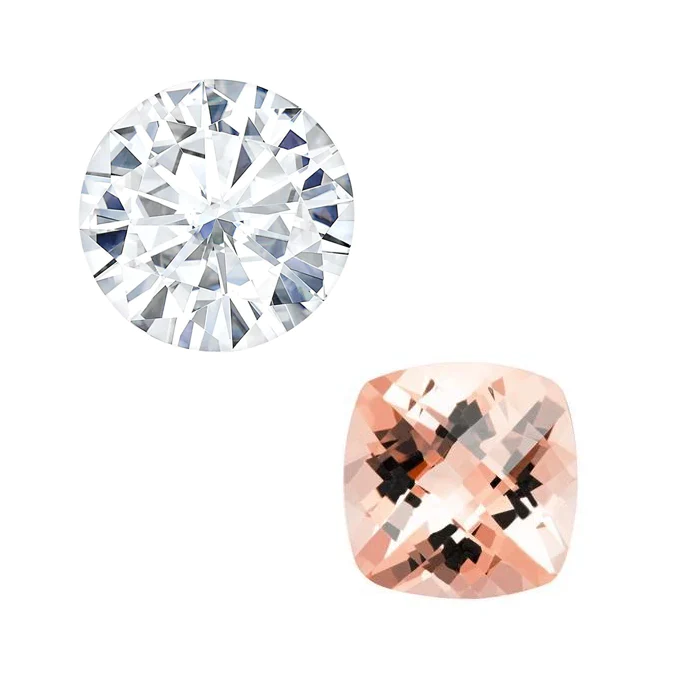
Origin of Moissanite vs Morganite: Moissanite is a stunning gem that comes from space.
It was found by a French scientist named Henri Moissan in 1893 inside a space rock crater.
This gem is made of something called silicon carbide, which is very hard to find on Earth.
However, scientists learned how to make it in a lab, which is good for the environment.
Moissanite gems are super shiny and colorful because they can bend light. This makes them glow with beautiful colors.
Morganite, on the other hand, gets its name from financier and gem enthusiast J.P. Morgan.
It’s a lovely pink or peachy-pink gemstone belonging to the beryl family, which also includes emerald and aquamarine.
The gem is mostly found in Brazil, Madagascar, and parts of the United States.
People love Morganite for its soft colors and see-through look. The color comes from a little bit of manganese in the crystal.
People like using morganite in engagement rings and other jewelry like hairpinsand bracelets because of its warm colors and clear appearance.
Both Moissanite and morganite have different origins, totally different from each other.
Chemical Mixing of Morganite and Formation of Moissanite
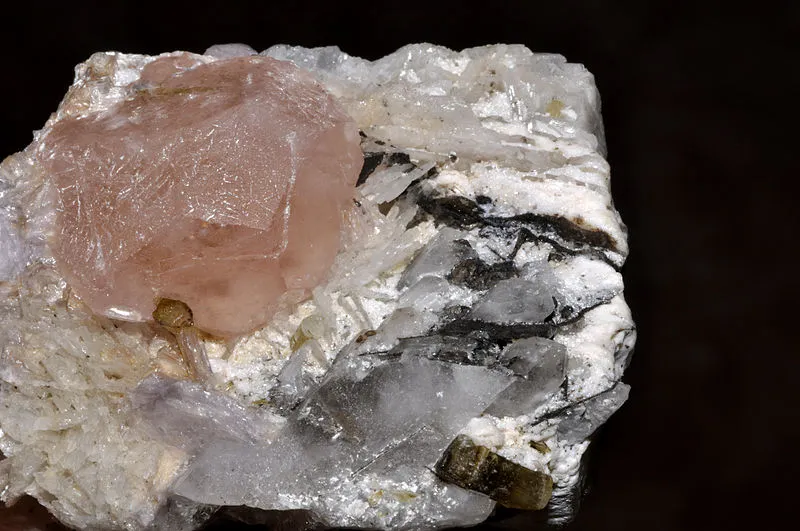
Morganite, a lovely gemstone frequently found in jewelry, is formed by mixing different elements.
This soft pink or peachy gem is part of the beryl mineral family, similar to aquamarines.
The beautiful color comes from a little bit of manganese found in its crystals.
It’s also made up of aluminum, beryllium, and silicon dioxide, which gives it its outstanding look.
This combination of elements gives Morganite its delightful colors, making it a popular option for engagement rings and flower decorations.
Moissanite is an exceptional gemstone with an amazing story from space.
While Morganite comes from the Earth’s crust, Moissanite originates in the sky.
It was discovered in pieces of a meteorite that hit Arizona’s Canyon Diablo over 50,000 years ago. This gem shines a lot and is very hard, similar to diamonds.
Moissanite is rare and has a cosmic connection, making each piece like a small part of space that we can appreciate here on Earth.
What’s the Difference Between Moissanite and Morganite?
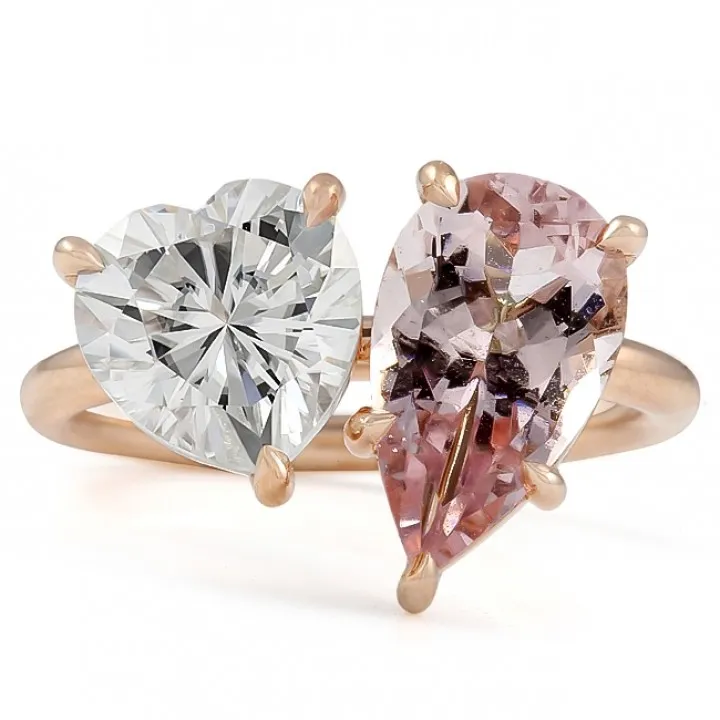
1. Color
Morganite, a complex and attractive gemstone, is famous for its soft shades.
Ranging from pale pink to peachy tones, its colors give a feel of romance and grace, making it a popular choice for engagement rings.
Moissanites are gems that shine with lots of beautiful colors, like a dazzling fireworks show.
They can be clear or almost clear, or they can be fancy and have different pretty colors.
2. Sparkle
Morganite shines softly and delightfully, with a gentle brightness that catches the light but doesn’t make it too strong.
Its modish glow looks great in different settings and goes nicely with white or rose gold jewelry.
Moissanites shine incredibly and even brighter than diamonds. Their accurate cut makes them super bright and creates a stunning show of light.
Keep your moissanite jewelry sparkling with a cleaning cleaner designed to maintain the shine of your gemstones.
3. Hardness
Morganite is pretty, but it’s not as tough as some other gems. Its hardness is about 7.5 to 8 on the Mohs scale.
This means it can get scratched and worn down, especially if you don’t take good care of it.
With a rating of 9.25 on the Mohs scale, moissanite is incredibly durable and resistant to scratches, making it suitable for everyday wear without losing its shine.
4. Price
Morganite is not too expensive. It costs less than diamonds or moissanite but still looks nice.
A small morganite that weighs one carat might cost a few hundred dollars—usually, morganite costs between 100 and 200 dollars per carat.
Man-made morganite stones can be bought for under 100 dollars per carat.
Moissanites are a cheaper choice compared to diamonds, but they still shine brightly and look beautiful.
They’re great for people looking to save money. Sometimes, a moissanite that’s the same size as a morganite can be pricier.
People judge moissanites by how much they resemble real diamonds. The fanciest ones might cost about $500-600 per carat.
5. Symbolism
Morganite symbolizes love, compassion, and healing energy. Its gentle energies are believed to soothe the heart and promote feelings of emotional balance.
Moissanites are best for engagement rings because they stand for forever love and loyalty.
These gems are incredibly beautiful and capture the feeling of long-lasting dedication.
6. Durability
Both Moissanite and Morganite are durable. Due to its softer nature, morganite requires more attention and care to maintain its beauty.
It’s ideal for jewelry like earrings and ankle bracelets you won’t wear roughly or very often.
Moissanites are highly durable and can withstand the accuracy of daily wear. Their toughness ensures they remain stunning for generations.
7. Treatment
Most morganite gems available have their color improved and unwanted colors removed through heat treatment.
This is a common process and doesn’t lower the gem’s worth.
Moissanites are different from certain gemstones because they aren’t changed or improved artificially.
They’re made in a lab using a complicated process, all while keeping their natural beauty.
8. Clarity
Moissanite vs Morganite: Morganite usually has little natural specks inside it, adding to its specialness.
These specks don’t take away from how pretty it is, but they make it even more one-of-a-kind.
Moissanites are created in labs, which makes them usually very clear.
You can easily find moissanite that is perfect or almost pure, which makes them even more attractive.
Moissanite vs Morganite for Engagement Rings
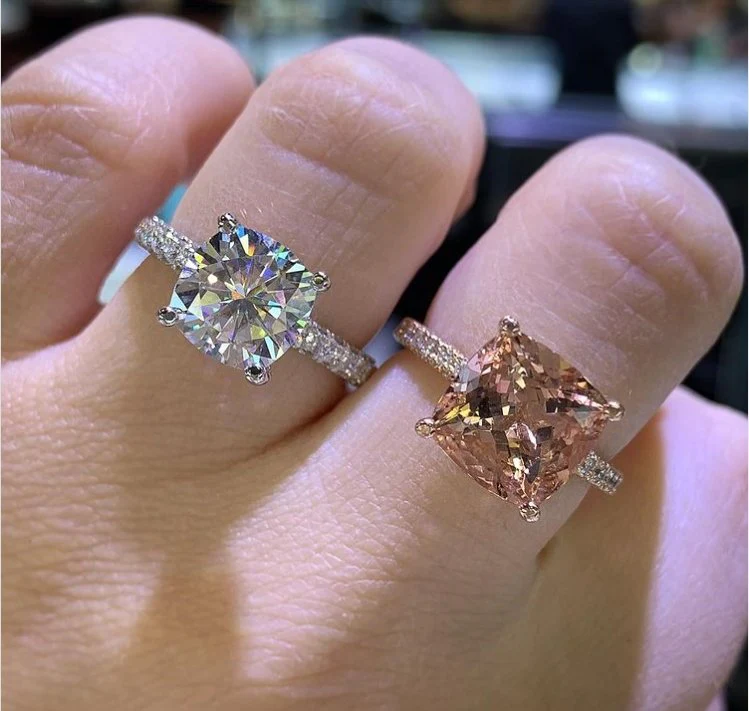
When you’re picking between morganite and moissanite for an engagement ring and bracelets, if you like a gemstone with a soft, light color and don’t mind taking extra care, go for morganite.
But if you want a gem that can handle everyday use and shines well, moissanite might be the better choice.
Ethical Considerations of Moissanite and the Morganite
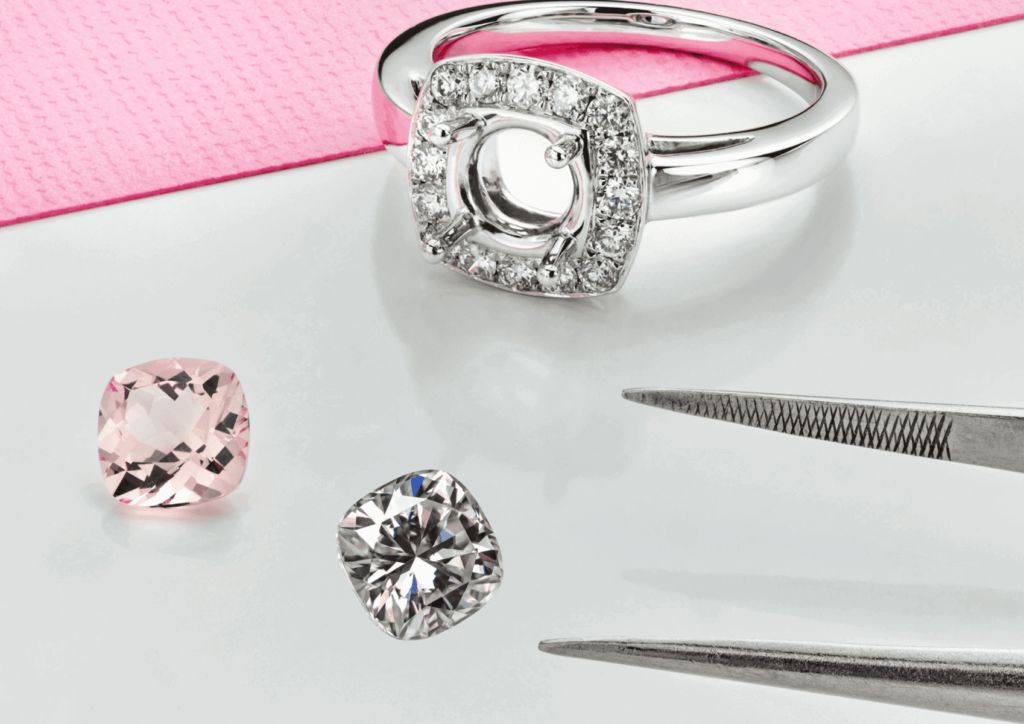
1. Ethical Sourcing
Morganite is often dug up from the earth.
To make sure this gemstone is sourced in a good way, people need to make sure the workers are treated fairly and the mining doesn’t harm the environment.
On the other hand, moissanite is made in a lab, so there are no worries about mining problems. This makes moissanite a better choice for the environment.
2. Natural Vs. Man-Made
It is natural or man-made.
Morganite is a gem that comes from nature, but moissanite is made in a lab.
Getting natural gems involves digging up the Earth, which can harm the environment and communities.
Choosing moissanite helps take care of the Earth and prevents problems linked to digging things up from the ground.
3. Mining Practices
Mining for morganite needs to be thought about carefully, considering the workers and the environment.
On the other hand, making moissanite is done in a controlled way that gets rid of the bad parts of mining.
This helps the environment and encourages responsible buying.
Conclusion
Deciding between Moissanite and Morganite ring is about what you like and value.
Both gems have unique qualities. If you want a gem that shines a lot and is strong, Moissanite might be what you go for.
It’s almost as hard as diamonds and shines like a real diamond. But if you want a gentle and soft-colored gem, Morganite might be your choice.
It’s a peachy-pink color and looks stylish and romantic. Just know that Morganite is a bit softer and needs more care to stay scratch-free.
Also, think about your budget. Moissanite is usually less expensive than Morganite, and both are cheaper than diamonds.
Remember, everyone has different tastes. Some people might like the super shiny look of Moissanite, while others might prefer the more fine beauty of Morganite.
Whichever you choose, your ring will represent your special love story and commitment!
Frequently Asked Questions
Which Gemstone is Better Suited for An Engagement Ring?
The choice between Moissanite and Morganite for an engagement ring depends on personal preferences.
Moissanite might be preferred for its diamond-like appearance and durability, while Morganite might be chosen for its romantic, soft color and unique appeal.
How Does the Color of These Gemstones Compare?
Morganite is typically found in soft pink to peach shades, while Moissanite is colorless but can display a play of colors, depending on the lighting conditions.
The choice depends on whether you prefer a colored or colorless stone.
Do These Gemstones Require Care?
Both Moissanite and Morganite are relatively low-maintenance gemstones.
However, due to Morganite’s slightly lower hardness, it’s a good idea to avoid wearing it during activities that might subject it to heavy impacts.
Regular cleaning and care are recommended for both.
Can Either of These Gemstones Be Passed Off as a Diamond?
Moissanite is often used as a diamond alternative due to its diamond-like appearance.
Its high brilliance can sometimes make it difficult to distinguish from diamonds. Morganite’s color and properties make it less likely to be mistaken for a diamond.

